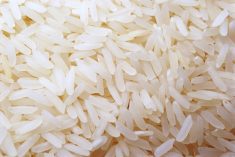Other countries’ domestic and foreign policies are often at the root of food disasters
What is it about Africa? With its tropical climate and rich soil, it should be able to feed its teeming millions many times over. Yet too often Africa becomes a metaphor for famine and hunger.
In 1984-85 a horrified world responded with a massive aid effort after watching graphic television images of starving Ethiopians. Yet a similar famine occurred again in 2003 with much less response. Chronic food shortages occur below the radar all the time. Today, malnutrition kills more Africans than AIDS and malaria combined. A seemingly endless need for food aid creates a dependency syndrome and perpetuates the commonly held (and often grossly unfair) image of Africa as “a continent of Ol iver Twists holding out their bowls to the world, begging for more.”
Read Also

Cooking fish of Manitoba: Keep your catch fresh and tasty for the table
Fishing in Manitoba provides mouthwatering meals, assuming anglers handle, process and cook their fish properly before sitting down to eat. Here’s how, with recipes and fish preparation tips.
Those words are from a new book titled Enough: Why the World’s Poorest Starve in an Age of Plenty. Written by a duo of veteran Wall Street Journal reporters, it is a timely analysis which should be required reading for anyone involved in agriculture and the food business.
Authors Roger Thurow and Scott Kilman take a hard, unblinking look at food security in Africa. Their conclusion: other countries’ domestic and foreign policies are often at the root of food disasters which periodically ravage the continent.
Yes, Africa must itself share in the blame, including corrupt dictators who use starvation as a weapon of war. Yes, civil conflicts and internecine violence destroy food production systems and make people unable to feed themselves. Yes, poverty and natural disasters, such as drought and floods, are also major causes of periodic food emergencies.
But sometimes the real reasons for food shortages, hunger and malnutrition lie beyond Africa’s borders, suggest Thurow, a foreign correspondent for the Journal and Kilman, the newspaper’s agriculture reporter.
A prime example is farm subsidies which enable U. S. and European farmers to dump commodities on the world market at cut-rate prices, undermining local agriculture. Witness U. S. cotton subsidies, which have ruined farmers in Mali, where cotton is a staple crop. The feeling in the U. S. is less than sympathetic. “Maybe the farmers in Africa should be the ones not raising cotton,” says one American cotton industry leader.
What’s sauce for the goose is evidently not sauce for the gander. Thurow and Kilman note the World Bank practically forced African nations to curtail their own agricultural subsidies in order to qualify for loans. Asked why the U. S. can subsidize farmers and Africa cannot, one American bank official says, “Because we can afford to be stupid and you can’t.”
Even food aid itself can be part of the problem. Thurow and Kilman are devastatingly critical of a food aid industry which often puts
its own interests ahead of its recipients.
In the U. S., food aid is often seen as a way to get rid of excess commodities. Amer ica’s government -funded food aid program requires that aid be in the form of food rather than money. As a result, food aid has become big business and a lucrative entitlement to its donors. “It is our right to provide aid in the form of food instead of cash,” says one U. S. milling industry official.
The image of Africa as food deficient is often a false one. Africa’s mainly small-holder farmers can produce bountiful crops. But politics and a lack of infrastructure prevent food from getting to where it’s needed when it’s needed. Meanwhile, local farmers are treated to the maddening sight of trucks loaded with American food aid rumbling past warehouses where their own commodities lie unused and spoiling. “American farmers have a market in Ethiopia but we don’t have a market in Ethiopia,” complains one local grain trader.
At times, an undercurrent of barely controlled fury runs through the narrative at the sheer outrage of starvation in a 21st century world of plenty. But this is far from a pessimistic book.
Thurow and Kilman describe a diverse and sometimes unlikely cast of humanitarians – from rock stars, evangelical Christians and entrepreneurs to everyday American housewives and working stiffs – all dedicated in their own way to fighting hunger in Africa.
The authors also devote a chapter to proposed solutions: creating a global fund for Africa’s small farmers, investing in infrastructure, giving food aid the flexibility for local purchases, eliminating crippling foreign subsidies, developing price discovery mechanisms for domestic agriculture. And more.
This is an on-the-ground book which takes the reader directly to the heart of the story. Thurow and Kilman have been to the front lines and seen things first hand. They’ve visited feeding stations, interviewed local farmers, talked to officials, observed both suffering and promise up close. The book’s crisp prose and crackling immediacy carry the hallmarks of investigative journalism at its finest. Read it. And do something to help. [email protected]

















